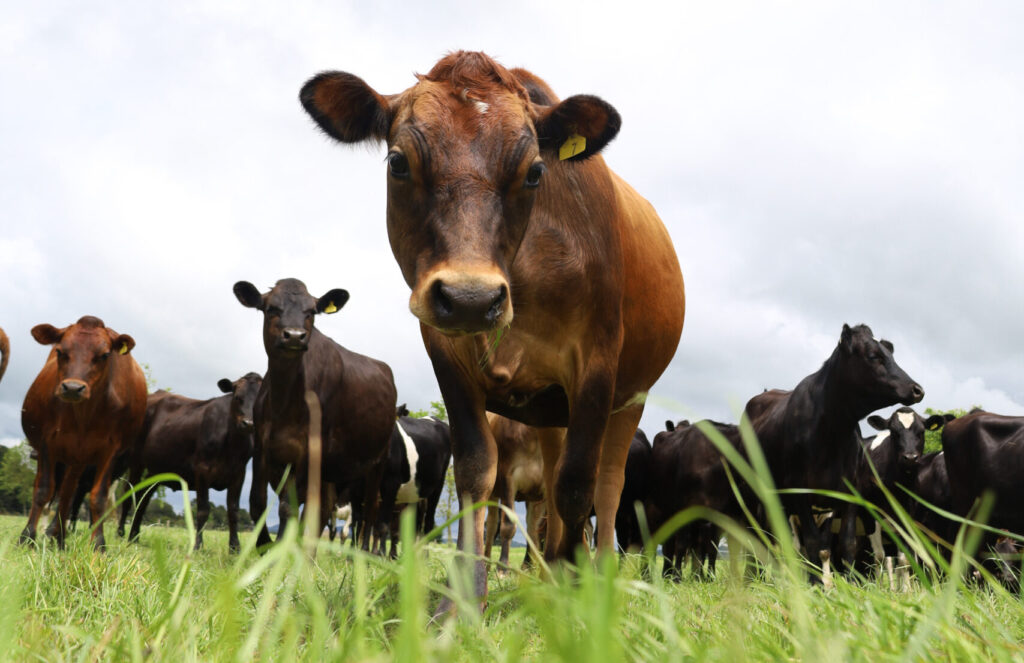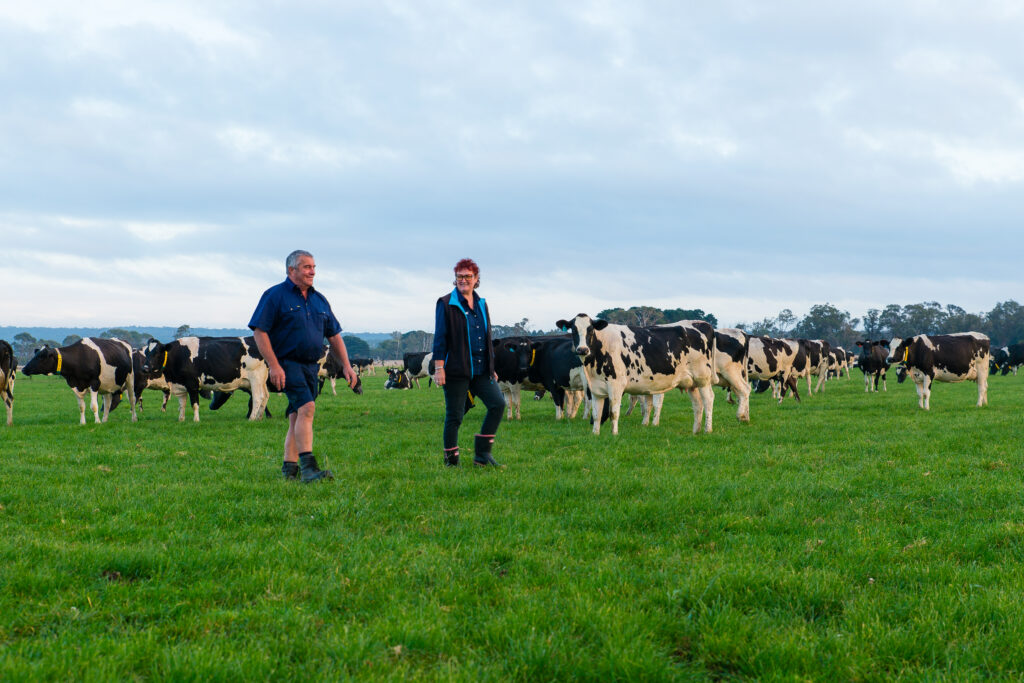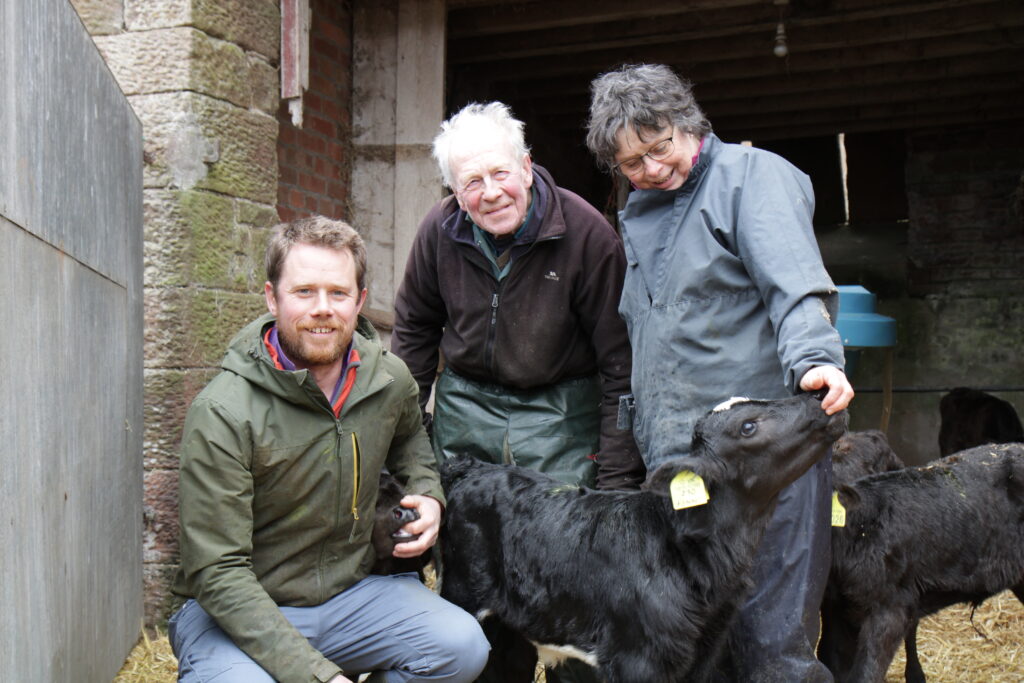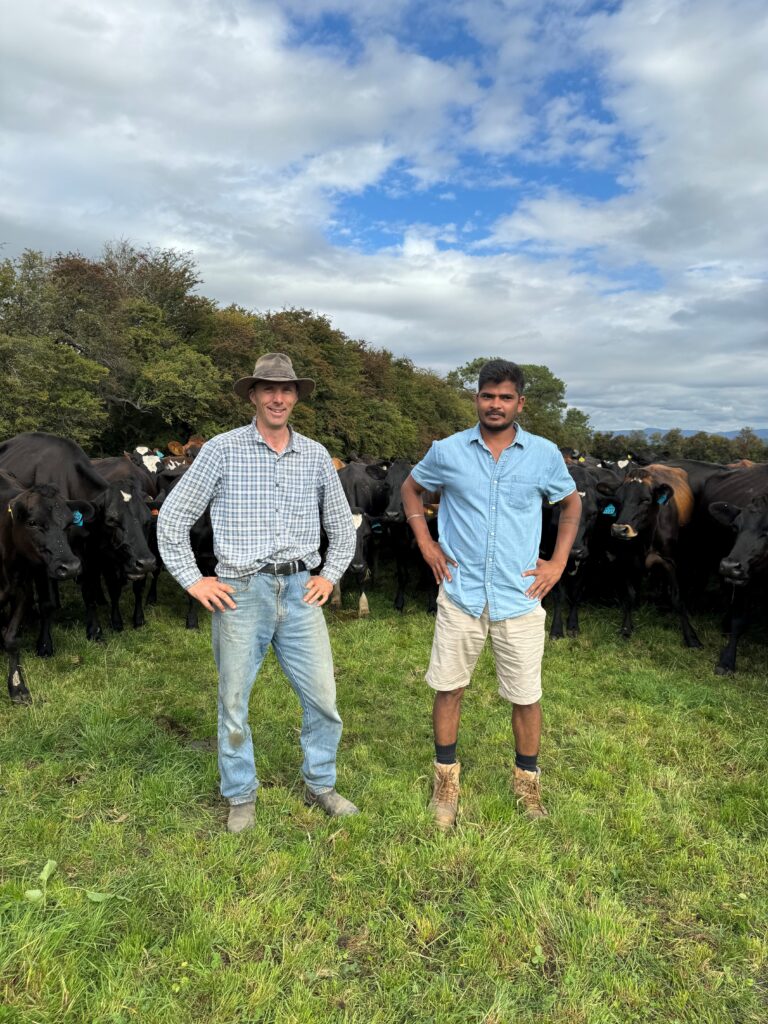Breeding dairy cows that produce less methane and nitrogen is helping one Tasmanian farm group meet its sustainability goals.
And thanks to a focus on efficient milk production, the businesses network of six farms on Australia’s Island state has proven environmental stewardship can work together with profitable dairying.
“Robust” and efficient cows are at the heart of this connection, closely followed by pasture growth, consumption, people, and sustainability.

Breeding and feeding go hand-in-hand
At Cressy, in Tasmania’s Northern Midlands, farm manager Troy Ainslie said the business’s breeding philosophy made achieving these targets easier.
“Breeding is huge, it’s right up there with feeding and they go hand-in-hand,” he said. “Then if you have a good team and good management with good cows, it’s a match made in heaven.”
Troy manages Compass’ smallest Tasmanian dairy operation a 540-cow spring calving farm, where the herd produces 1.02kg of milk solids per kilogram of liveweight.
The business uses LIC genetics to breed replacements, focusing specifically on developing low maintenance and capacious dairy cows with good stature, feet, legs, fertility, and low somatic cell counts.
For the past three seasons, this Cressy farm – along with the other five properties operated by Compass Agribusiness in Tasmania have also used LIC’s HoofPrint® index to guide bull selections.
The HoofPrint index is a 10-point ranking system designed for farmers to choose bulls to breed progeny for dairy herds with a lighter environmental footprint.
The index ranks sires according to predicted methane emissions and urinary nitrogen excretion – two major contributors to the dairy industry’s environmental impact, and is one of the many tools Compass uses to improve its environmental standing.
It complements agronomic practices such as soil testing – to guide fertilizer applications – and soil moisture monitoring for maximum water use efficiency.
Soil testing at the Cressy farm in late 2021 revealed perennial ryegrass roots down into the soil profile as far as 1.2 metres, something Troy attributed to managing irrigation and water sustainably.
For example, irrigating little and often and understanding that any rainfall or irrigation that exceeds 8mm at a time is run-off.
Last season the farm used 5 megalitres/ha of irrigation water and in January (summer) Troy said they were on-track for a similar usage this year. In the drier 2018-19 season irrigation was 8.3ML/ha.
Quality pasture for the environment and bottom-line
Maintaining the quality and integrity of pasture has also been crucial for environmental goals and cost management.
Troy said the Cressy farm maintained most of its original pasture from seven years ago. Last year only 3 per cent of the farm was resown, while the maximum amount completed in a year has been 5 per cent.
Compass Agribusiness, Agribusiness specialist Ryan Ashby, who is based in Tasmania, said operating a closed model on its dairy farms – limiting the amount of bought in feed – also helped reduce the business’s environmental footprint.
“Every kilogram of feed we are putting down our cows’ throats has a nitrogen loading in regard to what goes through the cow and comes back out on the soil,” he said. “That’s something we are aware of and work to manage.”

All Compass Tasmanian dairy farms are pasture-based with homegrown silage or grain filling feed gaps.
At the Cressy farm last season, the herd was fed 900kg of grain in the bail per cow and pasture growth – across the 152-hectare irrigated property – was an average 15.3tonne/ha.
The farm is stocked at 3.6cows/ha and the milking herd is grazed off the farm in winter to develop a bank of pasture for the beginning of calving.
Fodder beet is a substantial part of the herd’s diet from April (Autumn) to dry-off in the first week of June, with the crop providing a cheap source of homegrown feed yielding up to 30 tonnes or more per hectare.
With a sole focus of turning grass into milk, Ryan said this provided Compass with flexibility to manage market or seasonal volatility.
The most recent example included monitoring the rising costs of fertilizer on a weekly basis.
“The past six to eight weeks we have cut our application rate back,” Ryan said in January.
“Our nitrogen use is now going on according to our round length. This means a tonne of urea is now going from being spread across 12.5ha to 20ha.”
Last year the Cressy farm used 130kg/ha of urea.
Looking ahead, Ryan said Compass was confident in the dairy industry and Tasmanian agriculture.
He said the state’s seasonal conditions suited low-input dairy farming which underpinned business and environmental sustainability.
Doing this well – with good cows and people – defined success.
“We have a happy team who we know want to get out of bed every day, produce grass and turn it into milk and have some fun along the way,” Ryan said.
“While making sure we leave the environmental side of it better for the next person to come along.”
Compass Agribusiness Tasmania farm facts
- Six dairy farms including five managed as part of the Compass Tas Dairy entity.
- 1680 hectares of effective farm area.
- Largest farm milks 950 cows.
- 32 employees in Tasmania.



